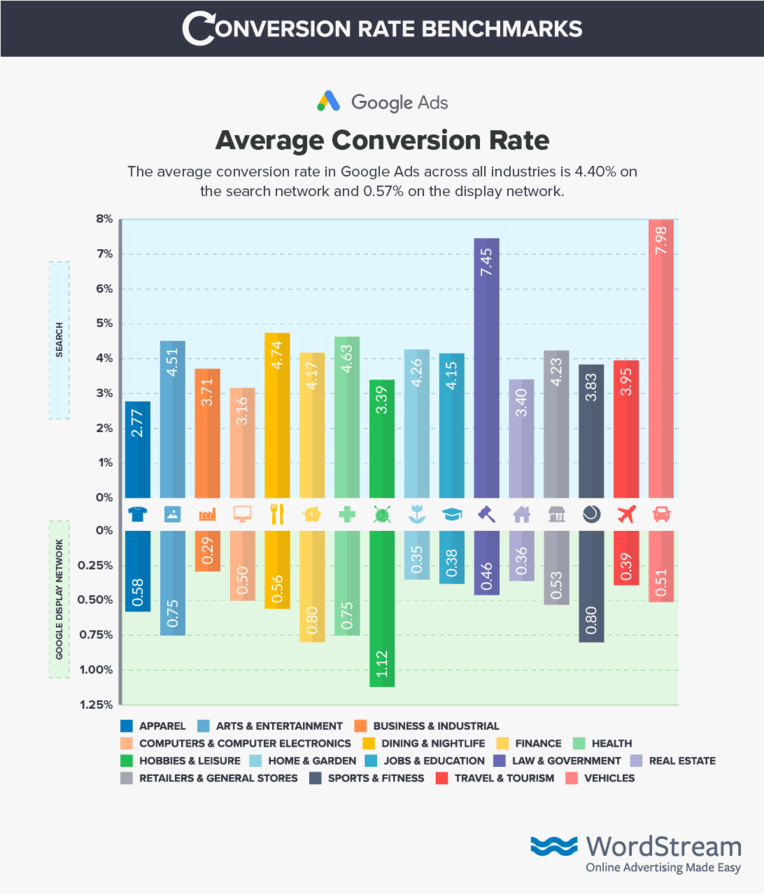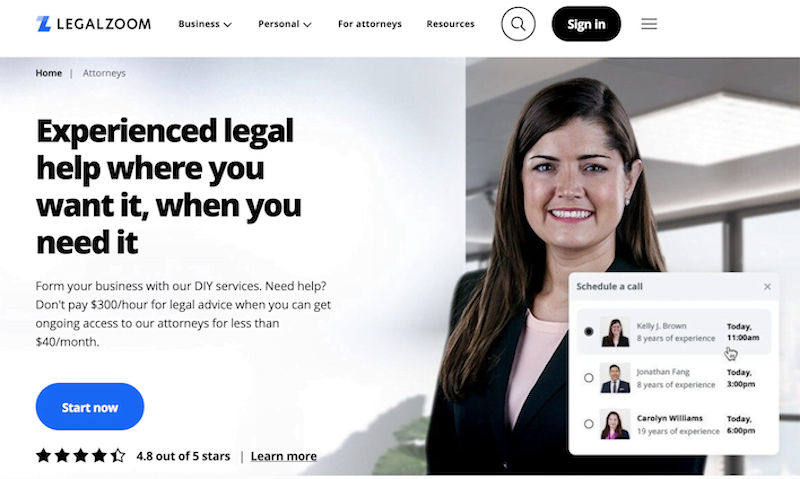Conversion Rate Optimization (CRO): How to Optimize Conversion Rates for PPC
Conversion rate optimization (CRO) is the process of optimizing your sponsored search ads, landing pages, and overall website design to raise your conversion rate. In other words, the goal is for the highest possible percentage of visitors to your site to convert, or complete your desired action. As a result, you increase profits from sales without raising your advertising spend.
Conversion rates can vary widely depending on your industry and business model, but regardless, everybody wants a better one! Below you’ll find benchmarks for average conversion rate in Google Ads across 20 common industries:

Naturally, even if your Google Ads conversion rate is average for your vertical, a higher conversion rate is better for business. Why settle for average?
Conversion rate optimization requires time and resources and, if you’re doing it right, testing. Nonetheless, it’s more than worth your while to familiarize yourself with the basic principles and metrics of website conversion optimization, so you can maximize the chances that a potential customer who arrives at your site from a search engine becomes a qualified lead or a paying customer.
There are a number of things you can do to increase your conversion rate, among them:
- Write compelling, clickable PPC ads that are highly relevant to the keyword/search query and your intended audience. All the better if you’re targeting high-intent mid-tail and long-tail keywords that indicate a searcher who is late in the buying cycle, as those consumers are more likely to convert.
- Maintain a high degree of relevance between your ads and corresponding landing pages. Your landing page should deliver on the promise of your ad (the call to action) and make it easy for the searcher to complete that action, be it signing up for a newsletter, downloading a white paper or making a purchase.
- Test your landing page design. Conduct A/B testing to find the right layout, copy, and colors that push the highest percentage of site visitors to fill out your form, call in, or otherwise convert to a valuable lead or customer.
Optimizing PPC Conversions: Start with the Right Keywords
When you start thinking about conversion rate optimization, it’s tempting to fiddle around with buttons and forms and other low-in-the-funnel design elements that might make or break the sale. But remember that part of optimizing conversions is getting the right visitors to your site in the first place:
- High web traffic is useless if none of those people convert.
- With search marketing, increasing your qualified traffic is a matter of bidding on and optimizing for the right keywords.
- Better keyword traffic data means you can make better decisions about your website and ad copy and better target the right customers.
Landing Pages and Conversion Rate Optimization
The quality of your individual landing pages can have a dramatic effect on conversion rates. Think about it – a prospective client stumbles across your page as the result of a specific search query. If the content and offering of that page aren’t relevant to what they were looking for or expecting to find, they will return to their search and you will lose that lead. And the negative effects don’t stop there! Poorly constructed landing pages can also cause your Quality Score to drop, which will in turn raise your cost per click, cost per action, and reduce your ad rank so that it’s harder to win spots in Google’s ad auction process.

So, what makes a good landing page? Common best practices for page design include few key elements:
- Compelling headline – Create a striking headline that is relevant to your PPC keyword and compels prospective clients to remain on the page to fulfill your desired action.
- Concise, targeted copy – The content of your page should clearly communicate your offering, and speak directly to the keywords associated with that ad group. Use bulleted lists to prevent copy from becoming too lengthy or overwhelming.
- Eye-catching, clickable call-to-action (CTA) – Make sure your CTA button stands out visually, appears clickable and uses short, gain-focused text.
- User-friendly lead capture form – A good form includes all the fields needed to fulfill your offer, but not so many that prospective clients are visually overwhelmed. Think carefully about what information is truly necessary to capture as you build your form.
- Attractive overall design – Landing pages should be clean and uncluttered, which conveys both trustworthiness and professionalism to prospective clients. Design should also be consistent with your brand in order to prevent a disjointed browsing experience for visitors.
Adhering to these best practices will keep your landing pages relevant and high-quality, which will lead to a valuable boost in both CRO and Quality Score.
Want more help with your Google ads conversion rates? Grade your account for free with the Google Ads Performance Grader!
